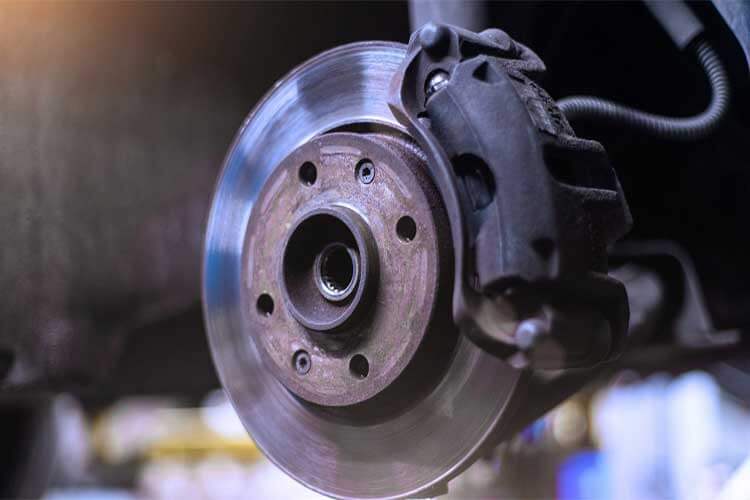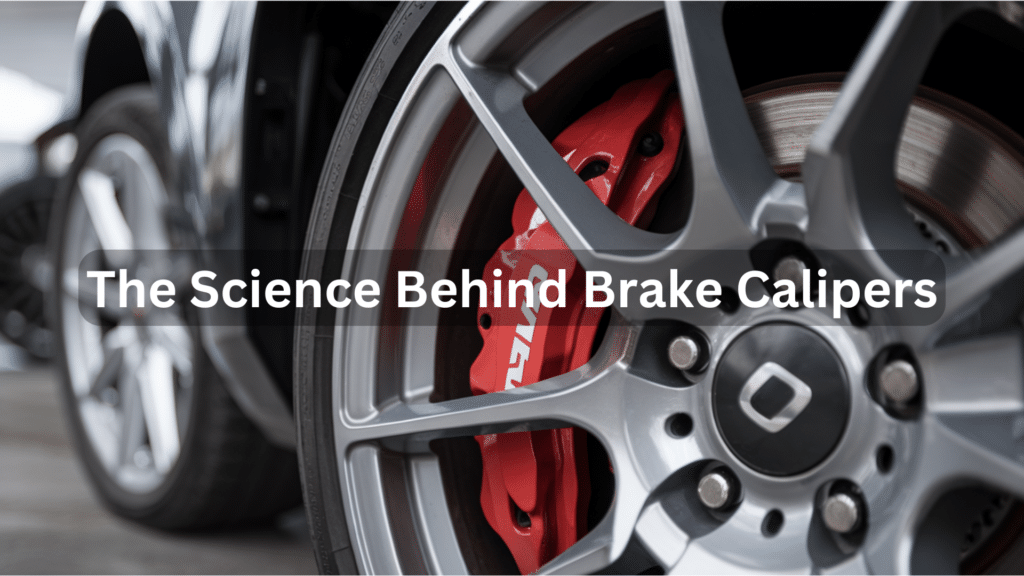I’ve been working on cars for years, and I can tell you one thing: brake calipers matter. A lot.
You might not think about them much. But they’re keeping you safe every time you drive.
Let me explain what they are and why you should care.
What Are Brake Calipers?

Brake calipers are like the strong hands of your braking system. They grip your wheels to slow them down.
When you press your brake pedal, these metal components start working. They squeeze your brake pads against the rotors.
This creates friction. Friction slows your car. It’s that simple.
There are different types of brake calipers on cars today. Some are basic, and others are high-performance. All serve the same core purpose—to stop the car when needed.
How Do Brake Calipers Work?
The Basic Function
Think about squeezing a sandwich. Your hands are the calipers. The bread slices are the brake pads. The meat in the middle is your rotor.
When you press the brake pedal:
- Hydraulic fluid pushes the caliper pistons
- The pistons push the brake pads
- The pads squeeze against the rotor
- Your car slows down
It happens in a split second. You barely notice it. But this process happens thousands of times in your car’s life.
The Hydraulic System
Brake calipers don’t work alone. They need hydraulic pressure.
When you push your brake pedal, it moves the master cylinder. The cylinder pushes brake fluid through lines. This fluid creates pressure in the calipers.
Brake fluid is critical. Without it, your calipers are useless.
Brake Pads and Rotors
Your calipers work with two other important parts:
Brake pads – These are the friction material that presses against the rotors.
Rotors – These metal discs are attached to your wheels. They spin when your wheels spin.
All three must work together. If one fails, your braking suffers.
Types of Brake Calipers
Fixed Brake Calipers
Fixed calipers don’t move. They stay in one position over the rotor.
Advantages:
- More rigid, which means better performance
- Even pressure on both sides of the rotor
- Better for high-performance cars
Disadvantages:
- More expensive
- Heavier than floating calipers
- Harder to replace
Floating Brake Calipers
These calipers can move slightly. They “float” on guide pins.
Pros:
- Less expensive
- Lighter weight
- Found on most everyday cars
Cons:
- It can stick if not maintained
- Slightly less performance than fixed calipers
- May wear unevenly if not serviced regularly
Piston Brake Calipers
Pistons are the parts inside calipers that push the brake pads.
Some calipers have one piston. Others have many. More pistons usually means better braking power.
Single-piston calipers are common on regular cars. They do the job just fine for most driving.
Multi-Piston Brake Calipers
Sports cars often have calipers with 4, 6, or even 8 pistons!
More pistons spread pressure more evenly. This means:
- Better stopping power
- Less heat buildup
- More consistent braking during hard use
If you drive normally, you don’t need these. But they’re cool to have!
Common Issues with Brake Calipers
Leaking Brake Fluid
Calipers can leak. This is bad news. You should see upon it immediately with utmost care and make take measures to prevent right away.
Signs of leaking:
- Low brake pedal
- Wet spots near the wheels
- Reduced braking power
- Warning lights on the dashboard
If you see these signs, get help fast. Don’t drive with leaking calipers.
Worn Out Brake Pads
Your brake pads wear down over time. This affects your calipers too.
When pads get too thin:
- The caliper pistons extend further
- This can damage seals
- It can cause uneven braking
Check your pads regularly. Replace them when needed.
Seized or Sticking Calipers
Sometimes calipers get stuck. They don’t release properly after braking.
You might notice:
- A burning smell
- One wheel hotter than others
- Your car pulls to one side
- Poor fuel economy
Sticking can happen from rust, dirt, or lack of lubrication.
Uneven Brake Pad Wear
If your brake pads wear unevenly, your calipers might be the culprit.
This happens when:
- Guide pins are stuck
- Pistons don’t move freely
- Calipers are bent or damaged
Uneven wear leads to noise, vibration, and poor braking.
How to Maintain Brake Calipers
Regular Inspection and Cleaning
I check my calipers every time I rotate my tires. You should, too.
Look for:
- Rust or corrosion
- Leaking fluid
- Damaged boots or seals
- Smooth movement
Clean them with brake cleaner spray. It’s cheap and effective.
Lubrication
Keep those moving parts happy! Lubricate:
- Guide pins
- Bushings
- Caliper brackets
Use silicone-based brake grease. Never use regular grease. It won’t hold up to the heat.
Replacing Brake Pads and Calipers
You’ll need to replace pads every 30,000-70,000 miles. It depends on how you drive.
Calipers last longer – usually 75,000-100,000 miles. But they do wear out.
If you’re handy with tools, you can replace them yourself. If not, any good mechanic can do it.
Brake Fluid Maintenance
Change your brake fluid every 2-3 years.
The old fluid absorbs water. Water causes corrosion inside your calipers.
The fresh fluid keeps your calipers working properly. Don’t skip this maintenance item!
Upgrading Your Brake Calipers
Why Upgrade to Performance Calipers?
Some reasons you might upgrade:
- Better stopping power
- Less brake fade during hard use
- Improved pedal feel
- They look cool (let’s be honest!)
Performance calipers make sense if you drive aggressively or tow heavy loads.
Aftermarket Calipers
Many companies make upgraded calipers. Look for:
- Reputable brands
- Proper fit for your vehicle
- Compatibility with your master cylinder
- Reasonable price (cheapest isn’t always best)
Popular brands include Brembo, Wilwood, and StopTech.
Conclusion
Your brake calipers might not be flashy. But they’re keeping you alive.
Take care of them. Check them regularly. Fix problems promptly.
Good brakes don’t just stop your car. They give you confidence behind the wheel.
I hope this guide helps you understand these crucial components better. Your safety depends on them!
Frequently Asked Questions
What are the symptoms of bad brake calipers?
Watch for uneven brake pad wear, squealing noises, leaking fluid, and pulling to one side when braking.
How do I know if my brake calipers are seized?
Your car might pull to one side, experience excessive heat or strange smells from a wheel, or feel like it’s dragging.
How long do brake calipers last?
Typically, 75,000 to 100,000 miles. But driving habits and maintenance matter a lot.
Can I drive with a stuck brake caliper?
No! It’s dangerous. It can damage other parts and cause brake failure.
How much does it cost to replace brake calipers?
The price is usually $200-$500 per caliper, including parts and labor. It varies by vehicle type.


